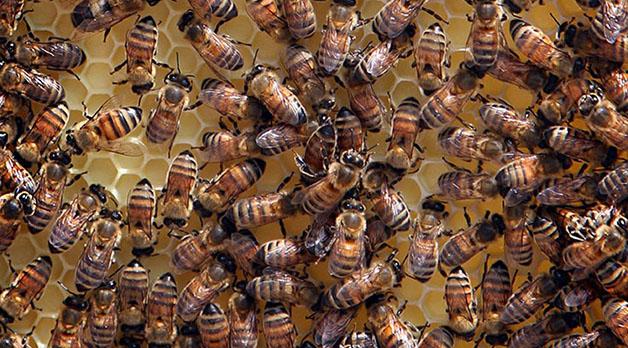Opinion: Neglecting welfare of bees dramatically impacts our economy
April 10, 2015

Tony is a political science senior
Over the last several decades, the Department of Agriculture has outlined why bee colony collapse disorder is a principle threat to the United States’ food supply and economic and social well-being, with over 45 percent of American produce relying on bees for pollination.
Beekeepers across the country have been grappling with CCD for decades now, but since 2005 the average number of bee colonies lost per year per keeper rose from 22.4 to 31.9 percent, according to the Department of Agriculture.
Almost one third of all bee colonies in America collapse by the end of each year, and this phenomenon has a variety of social and economic impacts.
In New Orleans, commercial beekeepers have supported this trend and have reported between 30 to 35 percent of colony loss annually to the Department of Agriculture.
Locally, this disruption in pollination has a direct negative effect on employment in agricultural and food service industries, higher production costs and scarcity of fresh produce — which can also be observed in California, Florida and all other major food producing states.
Entomologists, scientists who study insects, have identified three main causes for CCD and mostly agree that a combination of these factors is ultimately responsible for such high colony mortality with federal funding.
The first of these factors that is contributing to the general unhealthiness of American bees is the monocultural nature of American farming.
This is when a farmer plants one type of crop per field and releases the bees for pollination.
As a result, they essentially feed the bees only one type of food and deprive them of all other essential nutrients.
The second factor is that because pesticides have been known to reduce the bee’s immune defense, parasites like the varroa mite have become rampant, and in some cases, are responsible for destroying one half of beekeeper’s hives.
The third is that since the bee gene pool has become compromised with bees with low-immunities, food producers have taken to transporting colonies from around the country to introduce variety into their own colonies.
However, bees are highly prone to stress and become extremely reliant on stable weather patterns and climates.
If transportation stress levels become too high, workers may abandon their queen in search of more stable conditions.
To understand what is happening to American beehives, food production and the economy as a result of CCD, it is imperative to realize that human activity directly impacts these areas.
Pesticides, irresponsible farming practices and environmental factors are rapidly reducing bee populations around the world.
Choosing produce that is grown without pesticides can stabilize bee populations locally and help boost their immune defenses.
According to European bee specialists, if one third of consumed crops were grown responsibly, CCD could be reversed in some of the hardest hit areas within a decade.
So, next time you see a protester with a “Save the Bees” sign, don’t snicker.
Think of the hundreds of millions of dollars lost annually, 250 percent increases of fruit and vegetable prices and fights in the supermarket over who gets apples, almonds, carrots or onions this month because that is what’s at stake.






